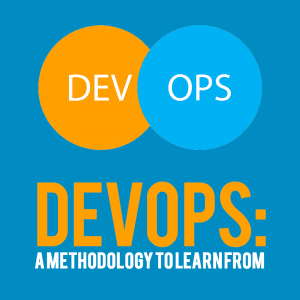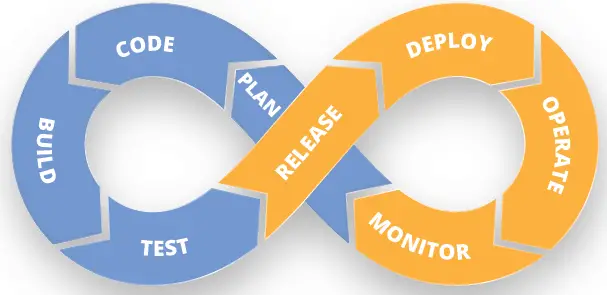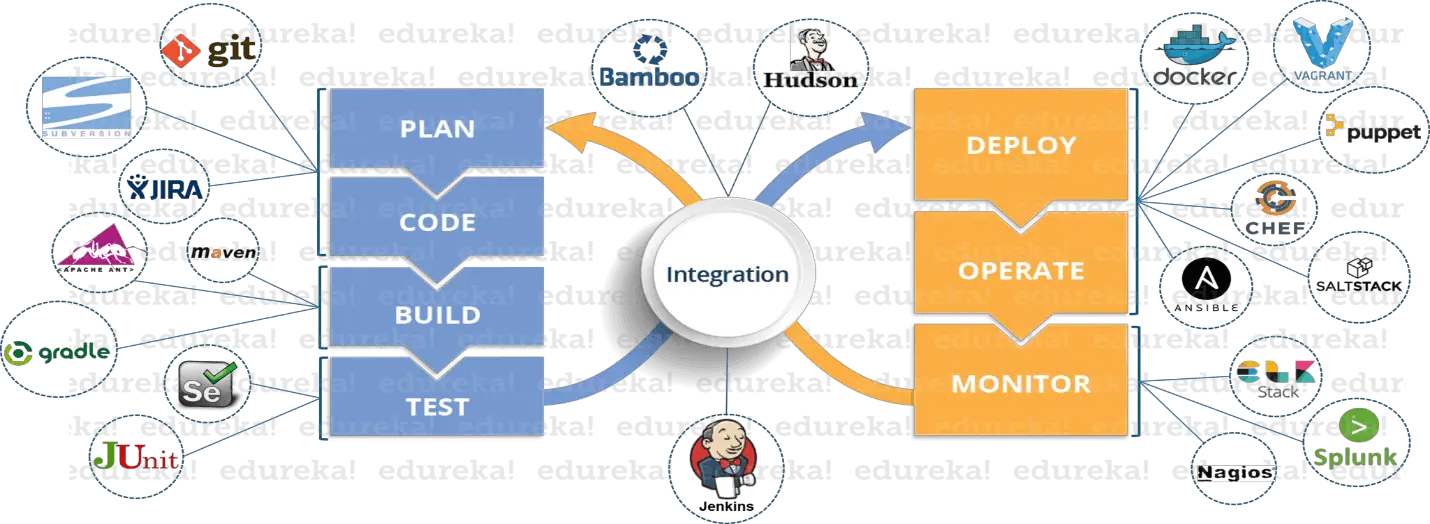
So, what is DevOps? And why should you learn DevOps methodology?
DevOps, in its essence, is not a technology. It is a method of bridging the “development” and “operational” phases of a company. Traditionally, the development of software and the operations involved in deploying it were handled separately by two different people or departments in two distinct roles. DevOps aims to increase efficiency by blurring the lines between these two phases of software development. For any tech professional looking to optimize time and resources for maximum output, understanding, and learning, DevOps is key.
The Age of Agile
In a technical hierarchy, the development team works on creating the product/service. They sort out the requirements, design the architecture, code the programs, test/debug the errors, and finally deploy the software in a real-world scenario. This approach is known as the waterfall model.
Over time, companies realized that the waterfall model was slow for developers. Situations often arose where, by the time the product was rolled out, the customer requirements had changed almost entirely. This is where Agile development came into the picture.
Agile development basically stressed the importance of delivering the entire software in smaller chunks of features periodically. This allowed a team of developers to break down the issues and debug their codes better with multiple iterations.
This method optimized the development phase, but it lacked agility whenever the operational phase began.
From Agile to DevOps
This is when DevOps arrived on the scene. DevOps is basically a practice of bringing agility and optimization to both development and operations.
Development and operations go hand in hand. To ensure software is running smoothly, constant collaboration between development and operations is needed.
Consider this scenario:
The Dev team develops a new application and sends the code to the quality assurance (QA) team. After testing, QA sends the identified bugs back to the Dev team. A communication gap might come up here—developers get angry, claiming that QA didn’t run tests properly or failed to look at the bigger picture. The testing folks might respond with “It’s not our process, it’s your code.” After spending a while going back and forth, the bugs are fixed, and the code is handed over to the operations team for deployment. This is where the heated debate begins. Everything works great in the Dev’s environment, but when the application is deployed in production, the code creates contention with the various workloads in a mutual, virtualized environment. This is where things go wrong, and everyone is running around with their hair on fire.
According to the DevOps culture, a single group of engineers has end-to-end responsibility of the software development from gathering the requirements to developing, to testing, to deployment, and finally to monitoring and gathering feedback from the end customers, then implementing any changes.
While Agile was an improvement on the waterfall model, it still had its limitations. Agile stressed only the importance of continuous integration and monitoring. The concept of continuous deployment is what paved the way for DevOps.
So, how does DevOps overcome the shortcomings of Agile methodology? You will understand this better once you know about the DevOps lifecycle.
DevOps Lifecycle in a Nutshell
DevOps appeared as a step change in the tech world, promoting the concept of continuous deployment along with integration and monitoring. The idea of continuous deployment is what sets DevOps apart. This ideology of constant change and improvement being reflected in the production side made the process a lot more efficient.
The infinity symbol has been rightly used for DevOps.
It emphasizes the need for the continuous changes and upgrades that drive the production and maintenance of a software application. The process starts at planning and coding, and then the application is built and tested. The application is then released and deployed by the Ops team, who is also responsible for monitoring the application. This cycle repeats over and over again.

Continuous Development (Plan, Code, and Build)
Software deliverables are broken down into multiple sprints of short development cycles, developed, and then delivered to the Ops side in a very short time.
DevOps tools such as Git and SVN are used for maintaining the different versions of the code, and tools like Ant, Maven, and Gradle build the code into an executable file that can be forwarded to the QA team for testing.
Continuous Testing (Test)
This is the stage where the developed application is constantly tested for bugs by the QA folks. Continuous monitoring helps in understanding the shortcomings of a code right when they are developed. This will help save time and resources, as the bugs can be fixed without affecting other aspects of the code.
For continuous testing, automation testing DevOps tools like Selenium, TestNG, and JUnit are used. These tools allow the QAs to test multiple codebases thoroughly in parallel with ensuring that there are no flaws in functionality.
Continuous Integration (Release)
This is the stage where the code supporting new functionality is integrated with the existing code.
Since there is continuous development of software, the updated code needs to be integrated continuously as well. The redone code should ensure that there are no errors in runtime environment, allowing us to test changes and check how it reacts to other changes. Jenkins is one of the popular tools used for this process.
Continuous Deployment (Deploy and Operate)
This next stage is where the code is deployed to the production environment. Here, we ensure that the code is deployed correctly on all the servers.
Since the new code is deployed on a continuous basis, configuration management tools play an important role in executing tasks quickly and frequently. Puppet, Chef, SaltStack, and Ansible are some popular DevOps tools that are used in this stage.
Continuous Monitoring (Monitor and Provide Feedback)
This is a very crucial stage in the DevOps lifecycle, which is aimed at improving the quality of the software by monitoring its performance. This idea of continuous improvement rooting from true monitoring and feedback is what makes the difference. There is a streamlined flow of execution happening between the Dev and Ops teams without any of the hassles.
This calls for the participation of the Ops team to monitor the user activity for any improper behavior of the system. Dedicated monitoring DevOps tools like Splunk, ELK Stack, and Nagios will continuously monitor the application performance and highlight issues.

The image above shows the end-to-end lifecycle of DevOps along with the various tools used in the process. From planning to testing, the activities are integrated with deployment and monitoring. This makes DevOps a continuous cycle with a prime focus on constant improvement. Coding repositories like Git are used right from the planning and coding stages.
The application is built with tools like Maven and Gradle. Selenium is an automation testing framework that is used to run tests. Jenkins is an integration tool that helps to bridge the gap between the Dev and Ops teams by continuous integration. Tools like Docker, Puppet, and SaltStack are used to deploy and operate the application. Finally, Splunk and Nagios help in continuous monitoring and providing feedback. The entire cycle is iterated and repeated.
Advantages of Adopting DevOps Principles
DevOps will help you master continuous development and deployment as well as monitoring and upgrading processes. It promotes constant collaboration between the Dev and Ops sides to create better results.
There is a lot to learn from this methodology, not only for technical professionals, but also for managers and leaders who need to optimize time and resources that are being spent on achieving targets. The idea of continuous development, deployment, integration, and monitoring can help leaders in adding efficiency to any given project. This streamlined approach will help yield efficient outputs.
The simple secret behind the success of DevOps is that it breaks down the tasks into smaller targets, which can be accomplished and managed better. This practice is something that we can adopt in our lives as well. Replicating the idea of constant monitoring and improvement can help us fine-tune our work ethic to bring a positive impact to our professional circle. Then, these small snippets are clubbed together to produce the desired results.
Continuous monitoring is also an important aspect of DevOps. Customer feedback and reaction to upgrades and changes are monitored depending on which essential changes can be incorporated in the development stage to further enhance user experience. This makes DevOps a never-ending process of constant change and improvement.

Another tenet of DevOps is constant adaptability and improvement, which can sometimes mean pivoting from one plan of action to the other. The methodology teaches you to be open to change and always be on the lookout for how you can drive better results.
With DevOps, the focus is always on the bigger picture. Sometimes, you need to “zoom out” and see how it all interconnects.
An Essential Skill Set
DevOps will help you to develop a generalist mindset. Specialized skills are important, but you need to understand and assist in removing bottlenecks in the overall system.
That’s why DevOps positions are highly sought after in the job market. Thinking in terms of dependencies and potential failures will help you envision the outcomes more accurately, another important skill that leaders need to learn.
Finally, let’s not forget the importance of empathy. Mistakes will happen, delays will occur, and things might break from time to time when teams work together. A strong DevOps professional will take it all in stride and try to figure out a solution using constant collaboration with teams.
Start learning DevOps today and leverage its principles to positively impact your professional life and your workforce.
